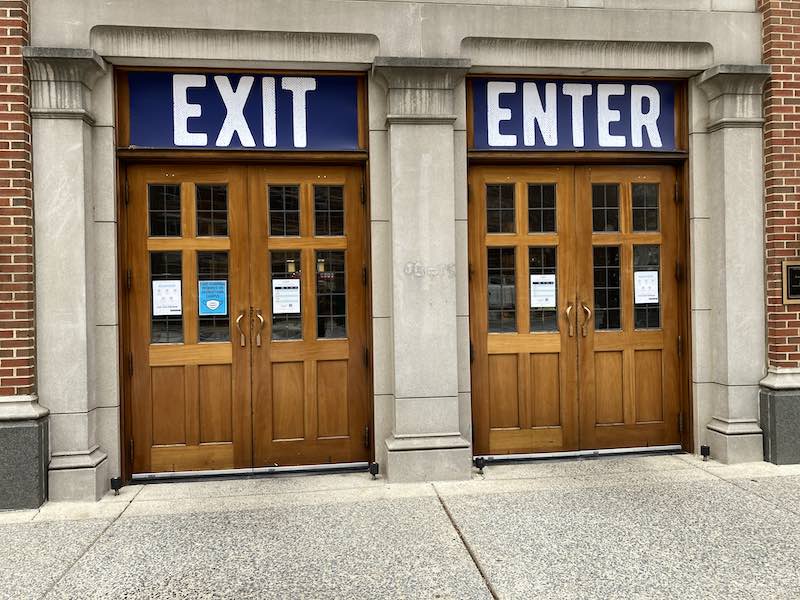Choosing Between Two Colleges? Consider These 6 Factors
The stress of waiting for admissions decisions ends when one hears back from colleges. For some, however, it can go on for a while. This is particularly true for those who receive acceptance letters from two different institutions.
Choosing between two colleges requires the comparison of different data points, such as cost, community, curriculum, and rankings. The college selection process is largely a subjective matter and it is important for college-bound students to pick a school based on their personal preferences and individual needs.
There are 3,982 degree-granting institutions in the US as of the academic year 2019 to 2020.
But the good news is that you can narrow them down into a realistic college list, one that contains five to ten institutions, by considering only a handful of factors. And when it comes to choosing between two colleges that just gave you an offer, there are a few things that you have to bear in mind, all of which starts with the letter C:
- Cost
- Community
- Curriculum
- Class size
- Census
- College ranking
Excited to start earning a degree but torn between two colleges you are most welcome to attend? Read on.
This article will talk about the different factors that can help you make arguably the smartest decision of your academic life. By the time you get to the conclusion, you will have a much better idea of which school you should notify just before the much-awaited College Decision Day arrives.

Full Cost of Attendance
According to the 2021 College Savings and Student Debt Study, four out of ten high school students gearing up for college rate cost as the most important factor when choosing a school to attend.
There are too many questions that can pop into one’s head, especially with rising college prices:
- Is taking out college loans an option?
- If so, will I be able to repay them in a manner I find comfortable?
- Am I eligible for financial aid?
- If so, will my award be enough to cover most expenses associated with college?
- Can I handle having a job while in college?
- Are my parents more than willing to help me out with the cost?
- Am I going to pursue graduate school after earning my undergraduate degree?
- If so, will it occur immediately after graduation or later in my career?
Don’t just take a look at sticker prices when comparing the cost of attendance of two colleges.
Instead, check out the net price.
Simply put, a college’s net price is the sticker price minus the financial aid award. This is when the importance of using a Net Price Calculator, which all US colleges and universities should have on their websites, comes in.
And because the financial aid award is the one that will determine the net price, spend enough time comparing the aid packages the two schools are offering by answering these questions:
- What types of aid are available?
- Do I qualify for one or more of them?
- How much do financial aid awardees typically receive?
- What percentage of first-year students receive some type of aid?
- Is it easy to apply for financial aid at the school?
- What are the requirements?
- When is the start and deadline of financial aid application?
Just because one college has a steeper cost of attendance doesn’t mean right away that you should pick the other with a lower sticker price. Keep in mind that a college degree is some form of investment. This means that it’s not just the cost of the degree you should take into account but also its value.
It’s pointless to save a lot on college expenses if the resulting degree is practically worthless!
Related Article: Prestigious Colleges With Best Financial Aid for Upper Middle Class
Community and Location
A degree is not the only thing you can earn from college. You can also earn friends and network connections, many of whom you will be able to count on throughout college and after graduation and beyond.
Because of this, it’s a great idea to pick a college whose community is right for you.
It’s a good thing that you don’t have to wait to be a student at the school to determine whether or not you will feel like you belong. This is something that you can find out for yourself before you notify one of the two colleges between which you are choosing. One of the ways to get a sense of a school’s student body is by joining its Facebook group.
Check which group you like better — if you like the vibe online, chances are that you will also like the atmosphere on campus, which is vital if you want the next four years of your life to run as smoothly as possible.
Besides the online route, you may also have an idea of the social climate at a college by:
- Having an in-person or virtual campus tour
- Attending admissions events near you
- Checking out on-campus events
- Sitting in a class or two
- Inspecting the dorms and housing facilities
- Looking into available clubs and organizations
- Consulting with the academic advisor — he or she can help with social needs, too
In college, you will meet friends that could be your pals for life, make connections that could help you with your career, and even potentially come across someone that could be your better half, which is why you should not overestimate the importance of community as a college-selection factor.
But don’t just focus on the people on campus.
It’s also a must that you consider the community outside the four walls of the college you are planning to attend. After all, while completing your program for four years, you will come across not only with the student body but also with the populace of the city where the school is located.
If you didn’t have a chance to tour, check our road trips here.
Curriculum Quality
Simply put, a curriculum provides students, teachers, administrators, and even community stakeholders (neighborhoods, associations, organizations, etc.) with a quantifiable plan and structure for delivering quality education.
So, in other words, it’s essential for the value of the degree you will show potential employers.
While we were talking about ways on how to have an impression of a college’s community, sitting in a class was one of the recommended steps. Doing this will give you an idea of not only what it’s like to become an actual student at the college but also what it’s like to work on a degree from the institution.
Two different colleges may offer the major you like. However, the curricula may not be alike. The following are some questions to ask when evaluating the curriculum used by colleges:
- Is the instructor well-prepared?
- Does the instructor show an interest in helping students learn?
- Do the lectures and assignments complement one another?
- Do the instructional materials help boost my knowledge and skills in the subject matter?
- Do the projects and exams help measure knowledge of the course?
- Is the course organized in a way that makes the underlying concepts easy to understand?
- Do I feel that what I am being asked to learn is vital?
- Would I recommend the course to my friends?
In some instances, you will have to rely solely on the feedback of current or former students of the colleges that just sent you an acceptance letter before you come up with a decision.
There are cases, too, in which you will have to turn to some metrics, such as the number of first-year students who return to the same school for their sophomore year or the percentage of undergraduate students who are able to finish the program within the published time.
We will discuss these matters that could help you choose between two colleges in a few — so read on!
Class Size
According to research, students in smaller classes perform better in all courses when compared to students in larger classes.
So, in other words, especially if you don’t want any failing grades to appear on your transcript, it’s a good idea to turn to class size when torn between a couple of colleges that are equally good.
But it doesn’t necessarily mean that the smaller the class size, the better the school.
In terms of deciding whether it’s a smaller or a larger class size that suits you better, consider your strengths and weaknesses. The things you want to develop or enhance in college should be taken into account, too.

For instance, being in a large class size comes with the following benefits:
- Less-isolated college learning experience
- Availability of a larger pool of peers to collaborate with
- Exposure to a more diverse set of people
- Opportunity to enrich one’s communication and critical-thinking skills
- Increased self-reliance as one-on-one sessions with students is impossible for the teachers
- Fosters being a team playing as large classes sometimes entail group work
- Decreased likelihood of getting bored and unmotivated
While there are perks that come with large classes, as we have established above, not everyone can enjoy the advantages. The following types of students can benefit more from smaller class sizes:
- Introverts
- Require one-on-one attention
- Prefer a more tailored learning approach
- Want to get to know everyone
- Like to share ideas
- Prefer to have more opportunities to participate
- Require more feedback
- Thrive better in a quieter environment
If the number of students and teachers you interact with daily is of personal importance, why stop at evaluating two colleges according to class size?
Generally speaking, if you prefer small classes, chances are that you will also find earning a degree so much more rewarding and worthwhile at a smaller campus. On the other hand, if large classes are your thing, a larger campus would probably be a better fit. And also, don’t forget to consider the type of campus.
Related Article: Best Liberal Arts Colleges
4 and 6 Year Graduation Rate
Besides class size, there are other figures that you may consider when choosing between two institutions. In many instances, they are the same stats graduating high school students look at when building a college list.
One of the numbers that tend to get a lot of attention during the college application season is the acceptance rate. But since you already received not one but two offers, the acceptance rate is no longer of value to you. It’s a good thing that there are many other data points that can help you in the process.
Retention rate — this is the percentage of first-year students who choose to enroll for another year.
Generally speaking, a high retention rate indicates that students are happy with their freshman experience, which is why they decide to enroll at the same academic institution instead of a different one.
The average retention rate at US colleges and universities is 78%.
However, refrain from assuming that just because a college has a low retention rate means that students are not pleased with the experience. There are many things that can affect retention rates, such as economic factors. This is exactly the reason why it’s not uncommon for some community and state colleges to have low retention rates.
Graduation rate — as the name suggests, this is the percentage of first-year students who complete their programs in a timely manner. You can think of the graduation rate as a long-term view of academic success. On the other hand, you can consider retention rate as a short-term view of academic success.
A good graduation rate for a school is 90%, which is the case for many of the country’s top colleges and universities. However, the national average graduation rate at four-year institutions is 60.4% only.
There are many different college stats that you can use when torn between two colleges.
Which ones you should use as some form of gauge will depend on the things you believe can help you reap higher education success. For instance, if you are a serious or casual student athlete, a college offering more sports options or a better athletic life would be the better choice for you.
Other figures you might want to consider before making a choice include:
- Yield rate
- Transfer rate
- Student body demographics
- Student-to-faculty ratio
- Test score range of admitted students
- On-campus crime rate
- Percentage of financial need met
- Average college debt of graduates
- Percentage of students employed after graduation
- Average annual salaries of graduates
College Ranking
First things first: never build a college list based on the choices of your go-to college ranking site.
But if you have just received an offer from two colleges that you placed on the top of your college list, it’s perfectly fine to decide with the help of your most trusted ranker. Doing this can help you figure out the things that make seemingly-alike schools different from each other, based on categories such as program, value, social life, etc.
Suppose that you received an offer from Harvard University and Yale University, both of which are the dream schools of many college-bound high schoolers.
No matter which of the two you choose, you can rest assured that potential employers will be impressed.
However, before you are able to come up with a jaw-dropping resume, you will have to first decide which of the two Ivy League schools you should enroll at. Since Harvard and Yale are some of the top schools in the country and on the planet, too, choosing between the two elite institutions is easier said than done.
This is when college rankings can come to the rescue.
Want the best bang for the buck?
Let US News help you out!
According to its 2022 Best Value Schools ranking, Yale University is #1. On the other hand, Harvard University is #3. The same college ranking site adds that the cost of attendance after receiving aid is $18,826 at Yale and $20,023 at Harvard.
Want the best possible social life in college?
Niche has the answer you are looking for. Based on its 2022 Colleges with the Best Student Life in America, Yale University is #7 while Harvard University is #11.
You can use college rankings to your advantage when having a difficult time choosing between equally good schools. In some instances, they can help you have some fun while making up your mind. Depending on which college ranking site you visit, you can come across categories such as:
- Best College Dorms
- Best College Food
- Best College Dining Halls
- Colleges With the Best Professors
- America’s Prettiest College Campuses
- Best Schools for Getting a Homecoming Date
- Universities Where Alumni Have Both Brains and Beauty
- Best Colleges to Attend for Beach Lovers
- Worst College Parking
- Worst College Dorms
- Colleges With the Worst Professors
But seriously, when seeking the help of college ranking sites in choosing between two colleges that have just welcomed you to their campuses, keep in mind a couple of things:
- Opt for some of the most trusted and reputable rankers
- Check out the methodology used
Related Article: 14 US News Rankings Alternatives
Just Before You Choose Between Two Colleges
Getting accepted into a college is, most of the time, not that easy. Getting accepted into two colleges and choosing which one you should enroll at is not easy, either!
Above, we talked about the various C’s to consider when deciding between two colleges.
Cost, community, curriculum, class size, census, college ranking — turn to these college-selection factors if you have a couple of acceptance letters from the institutions of your dreams, and you will end up with a smart decision.
Remember to take your time, too, but see to it that you will be able to decide before the college acceptance deadline!
Read Next: Which State Has Best Colleges
Disclaimer: The views and opinions expressed in this article are those of the authors and do not necessarily represent those of the College Reality Check.





